Key Points
- The Lonomia obliqua in South America is the world's most dangerous; its venom causes fatal bleeding.
- The Puss caterpillar is the worst stinging species in the US, found in Texas and Florida.
- Learn to identify these venomous caterpillars to avoid severe pain, hemorrhage, and death.
Poisonous caterpillars: It's a common childhood experience; spotting a caterpillar and wondering what majestic moth or butterfly it will become. Yet, beneath their often bright or fuzzy exteriors, some species carry a defense mechanism far more dangerous than any warning sign, a potent venom.
Recently, the medical and scientific community has intensified its focus on caterpillar envenomation (lepidopterism), acknowledging it as a legitimate global health hazard. According to research published in journals, even seemingly innocuous species like the Puss caterpillar in the U.S. are responsible for hundreds of human exposure cases annually, with some species causing life-threatening complications. In tropical regions, particularly South America, the genus Lonomia continues to worry public health officials.
This list of the most poisonous caterpillars in the world is crucial for anyone who loves nature, helping you identify these dangerous caterpillars and understand the very real risks they pose. Remember, a beautiful or poisonous green caterpillar often wears its warning colors proudly.
The 9 Most Poisonous and Dangerous Caterpillars on Earth
While most caterpillars are harmless, a few species have evolved venomous spines or hairs to deter predators. Contact with these stinging caterpillars can range from a painful rash to systemic bleeding and death. Here is a ranked look at the most medically significant and dangerous caterpillars in the world.
| Rank | Caterpillar (Larval Stage) | Adult Moth | Primary Location |
| 1 | Giant Silkworm Moth Caterpillar | Lonomia obliqua | Brazil, South America |
| 2 | Puss Caterpillar | Megalopyge opercularis | Southern U.S. (Texas, Florida) |
| 3 | Pine Processionary Caterpillar | Thaumetopoea pityocampa | Southern Europe, North Africa |
| 4 | Saddleback Caterpillar | Acharia stimulea | Eastern U.S. |
| 5 | Bag-shelter Moth Caterpillar | Ochrogaster lunifer | Australia |
| 6 | Io Moth Caterpillar | Automeris io | North America |
| 7 | Hag Moth Caterpillar | Phobetron pithecium | Eastern North America |
| 8 | Cinnabar Moth Caterpillar | Tyria jacobaeae | Europe, North America |
| 9 | White-marked Tussock Moth Caterpillar | Orgyia leucostigma | Eastern North America |
Must Read - List of 9 Most Beautiful Butterflies in the World (Ranked)
1. Giant Silkworm Moth Caterpillar
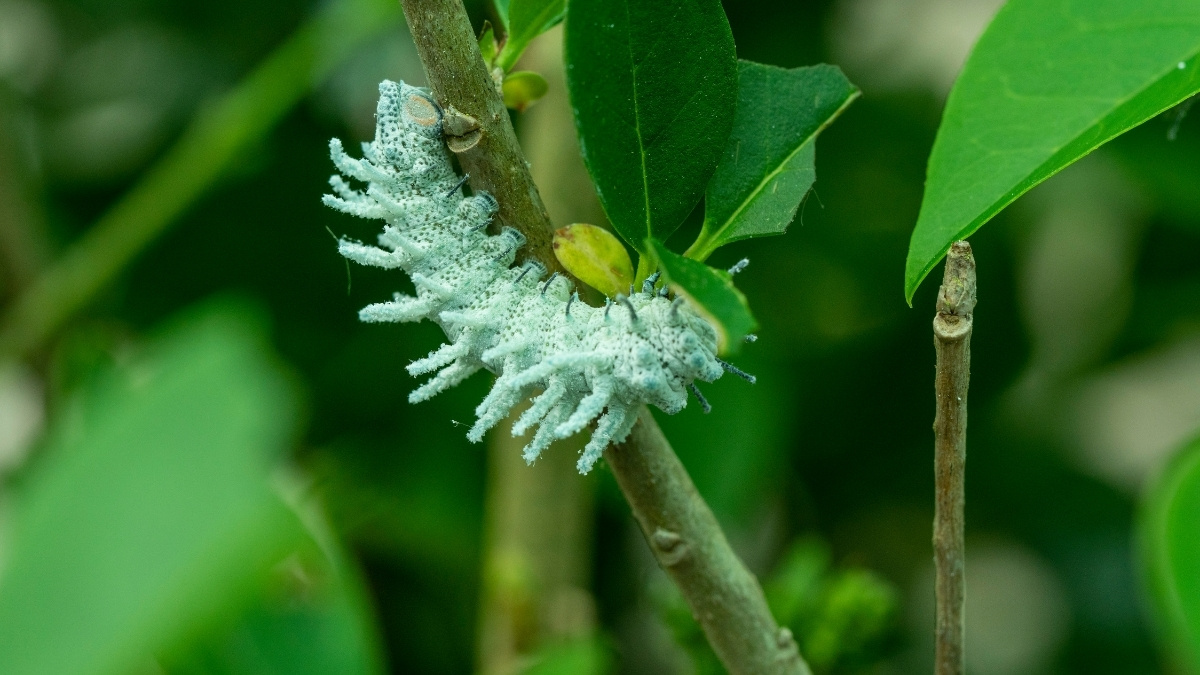
This unassuming-looking larva is arguably the most poisonous caterpillar on the planet. Found in the forests of Brazil and other parts of South America, the Lonomia obliqua is a master of camouflage. This poisonous caterpillar is covered in tree-branch-like bristles that inject a potent toxin, causing a dangerous condition known as lonomiasis. The venom acts as a powerful anticoagulant, leading to severe internal bleeding, bruising, and even potentially fatal cerebral hemorrhage if not treated quickly with a specific antivenom.
2. Puss Caterpillar
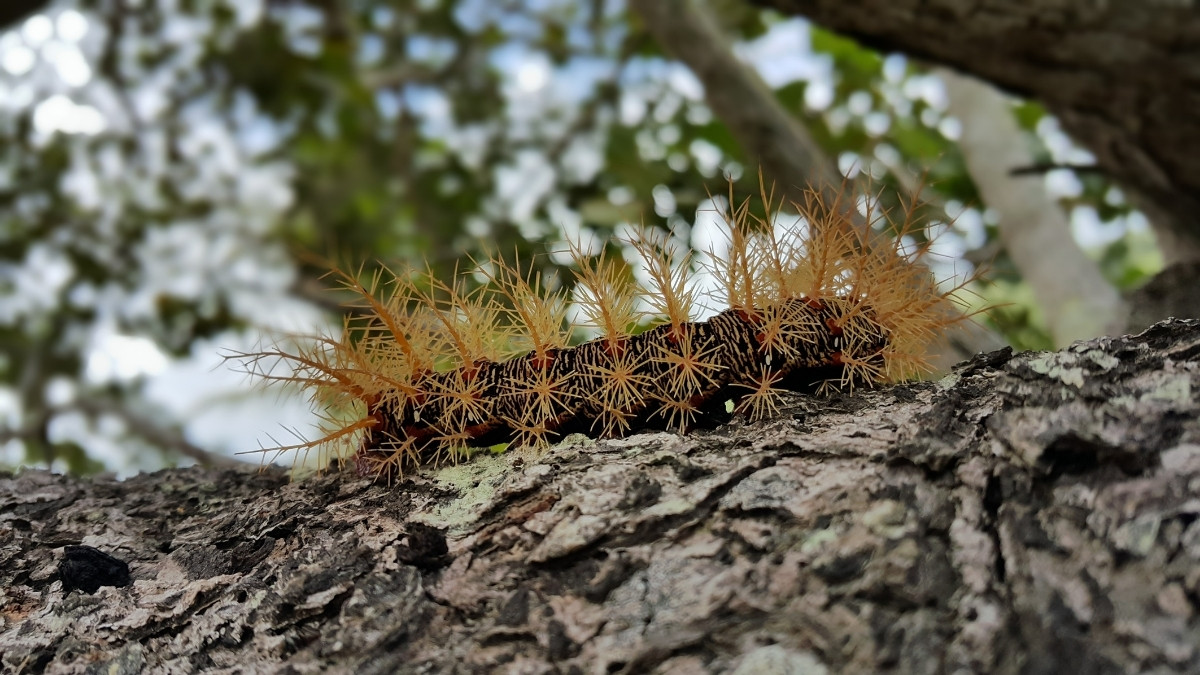
Don't let the soft, black, fuzzy caterpillar look deceive you. The Puss caterpillar, common in the southern United States, including Florida and Texas, is responsible for more human envenomations in the U.S. than any other stinging caterpillar. Buried beneath the dense, fur-like hairs are rigid, highly venomous spines. A sting is notorious for causing immediate, excruciating, throbbing pain, an erythematous rash, and sometimes systemic symptoms like vomiting and shock, often requiring an emergency room visit.
3. Pine Processionary Caterpillar
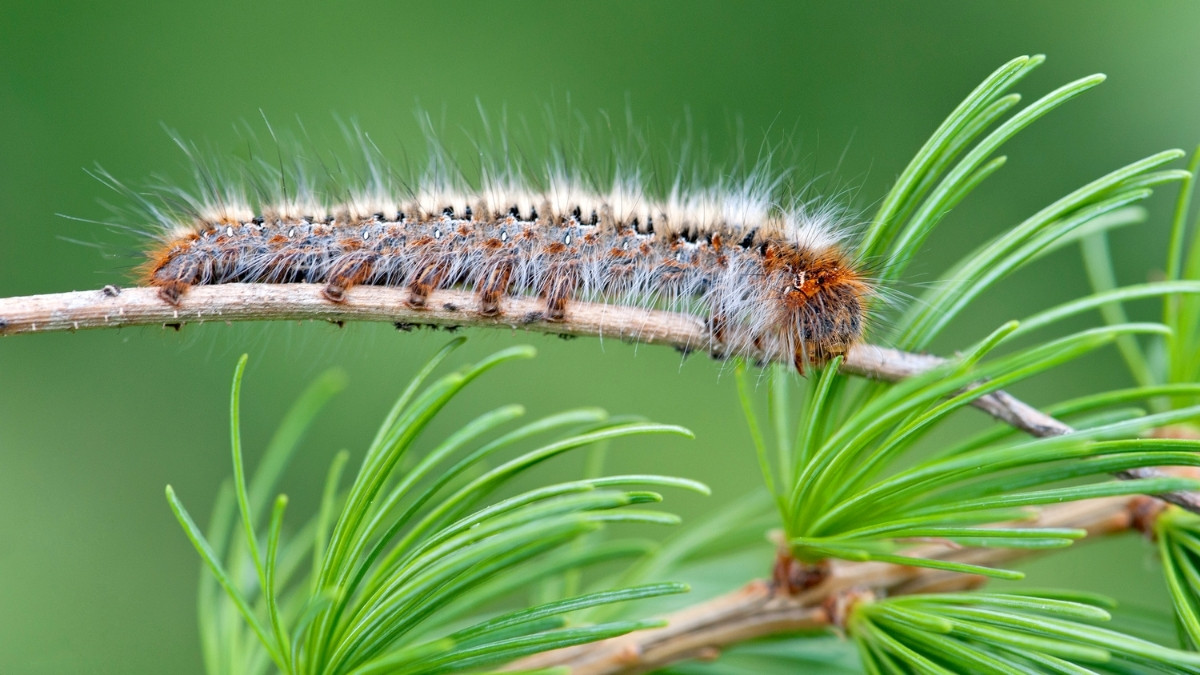
These are not just a nuisance but a serious public health concern across Mediterranean Europe. These caterpillars travel in distinctive head-to-tail "processions" and are covered in thousands of tiny, easily-shed, irritating hairs called urticating setae. Contact, even indirect (from wind-blown hairs), causes severe, itchy dermatitis, conjunctivitis (eye inflammation), and potentially dangerous respiratory distress if the hairs are inhaled. They pose a year-round threat as the hairs can remain toxic even after the larva has died.
4. Saddleback Caterpillar
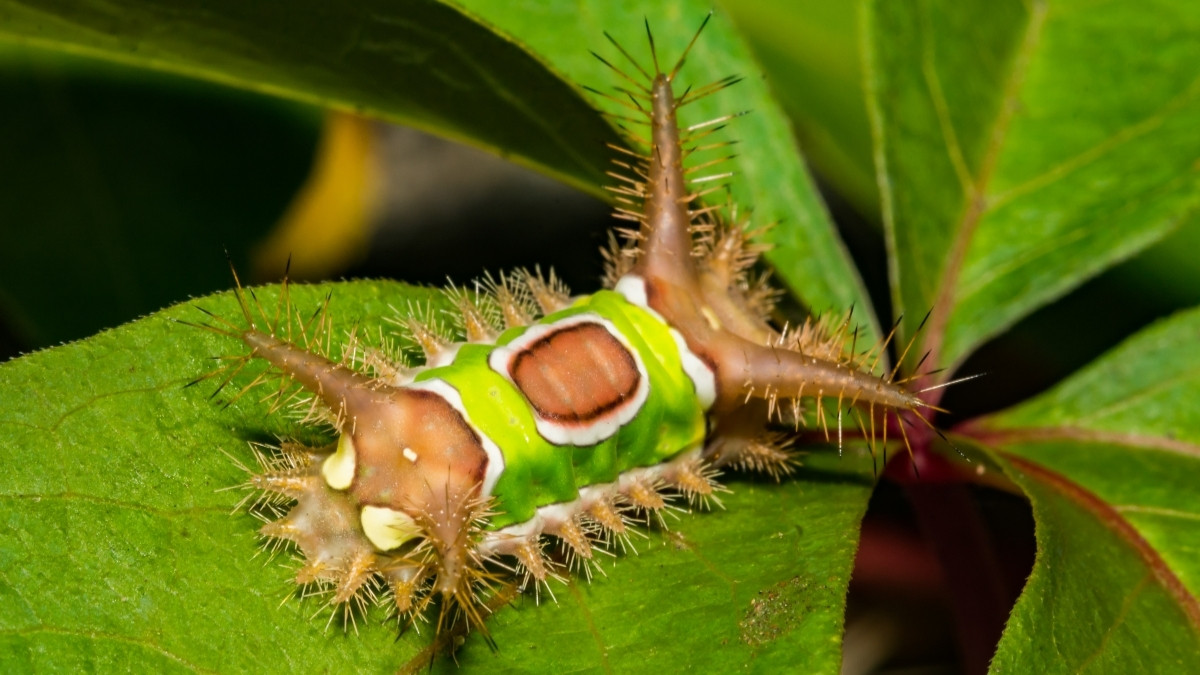
The Saddleback is one of the most vividly marked poisonous green caterpillars in the Eastern U.S. and is easily identified by the bright green "saddle blanket" with a brown "saddle" on its back. The fleshy horns and bumps along its body are armed with spines that inject venom—contact results in immediate, sharp stinging pain, a spreading rash, and significant swelling. While the pain is typically localized, some individuals may experience headache, nausea, or a longer-lasting rash, necessitating immediate care.
5. Bag-shelter Moth Caterpillar
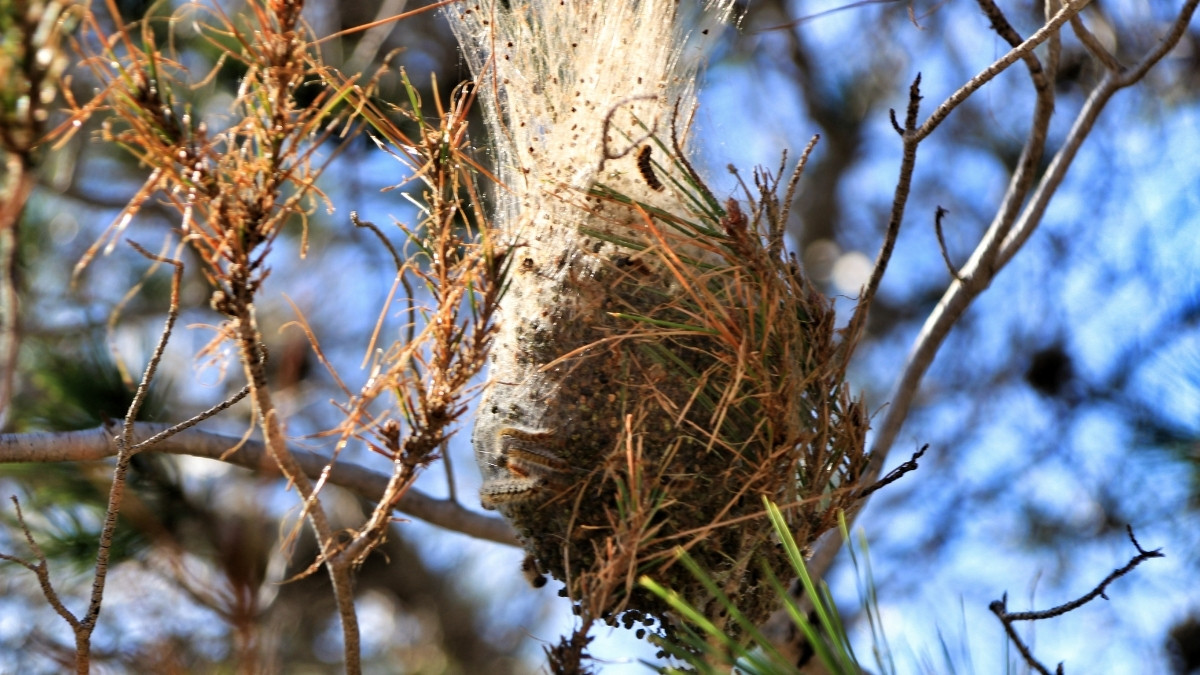
A native of Australia, this species is known for constructing communal, silken "bag-shelters" in trees. The caterpillars are covered in fine, irritating hairs that are easily dislodged and can be carried by the wind. These hairs contain toxins that cause severe dermatitis and inflammation upon contact. More dangerously, the hairs have been linked to causing severe health issues, including mare reproductive loss syndrome in livestock, demonstrating a powerful toxic component.
6. Io Moth Caterpillar
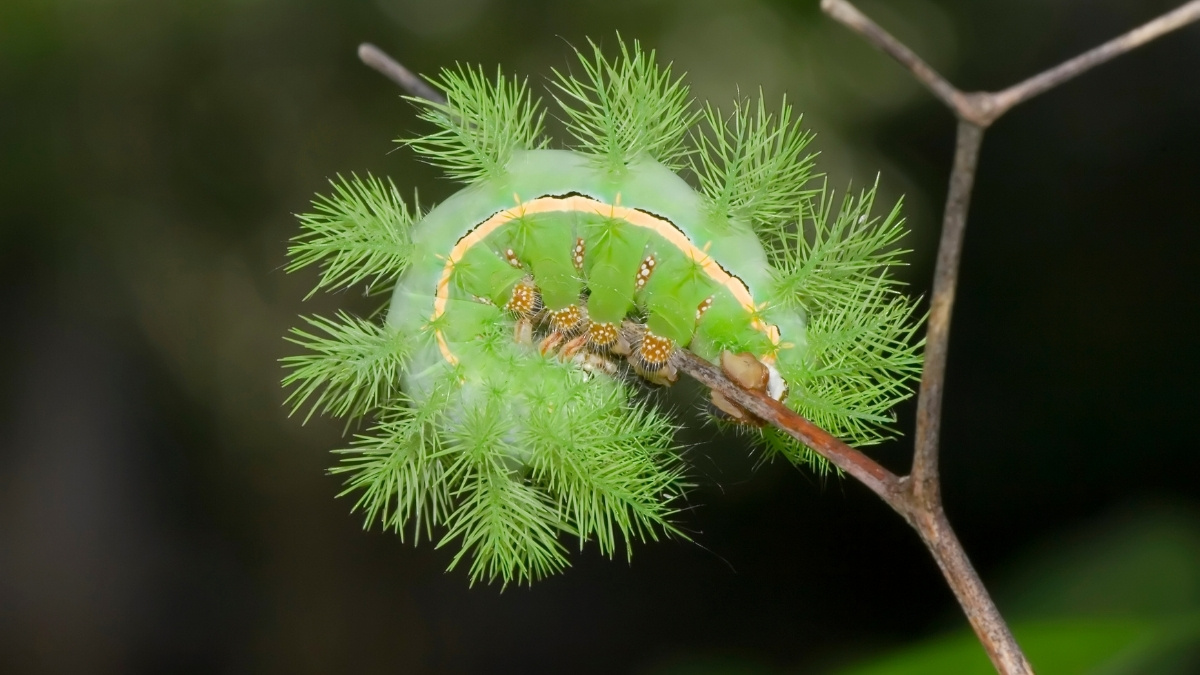
The Io Moth caterpillar is a well-known North American stinging caterpillar. Younger larvae are often reddish-brown, while mature caterpillars are bright, poisonous green caterpillars with distinct red and white stripes running along the sides. They are covered in clusters of stinging spines. A brush with this larva can result in a moderately painful sting, localized burning, swelling, and a rash that is characteristic of caterpillar dermatitis. While not deadly, the sting is unpleasant and highly irritating.
7. Hag Moth Caterpillar
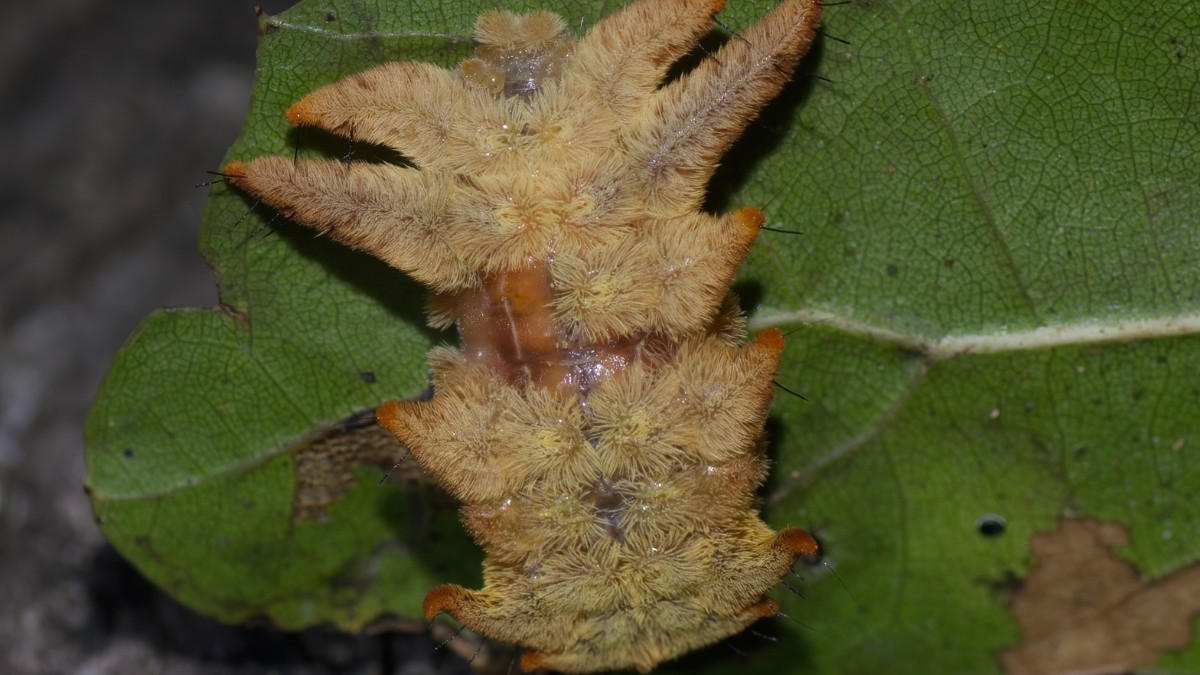
Credit - ficonservancy.org
The Hag Moth caterpillar, also known as the "Monkey Slug," is one of the strangest-looking poisonous caterpillars in the eastern United States. It looks like a pile of trash because of its strange, flat shape and the uneven, hairy projections that look like animal legs that have been thrown away. These long, fleshy projections have hairs that sting. The sting is usually mild to moderate, causing localized pain, itching, and a rash that goes away in a few hours. However, it is definitely a surprise to the person who touches it.
8. Cinnabar Moth Caterpillar
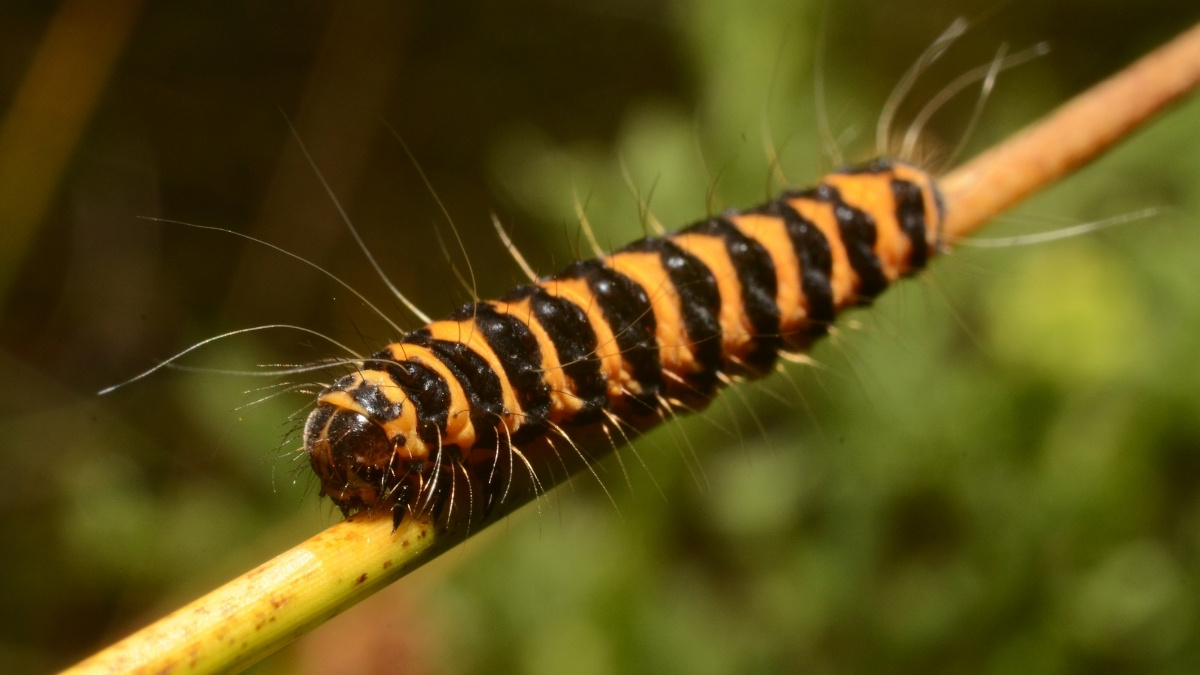
This caterpillar is not poisonous through its spines, but it is very poisonous if eaten. It is native to Eurasia but has been brought to other places. Its bright yellow and black striped body is a classic example of aposematism (warning coloration), which means it is poisonous. The caterpillar takes in poisonous alkaloids from the Ragwort plant, which is its main food source. This poison builds up in the larvae and makes them taste bad and poisonous to predators, including livestock, which can get very sick if they eat a lot of the species.
9. White-marked Tussock Moth Caterpillar
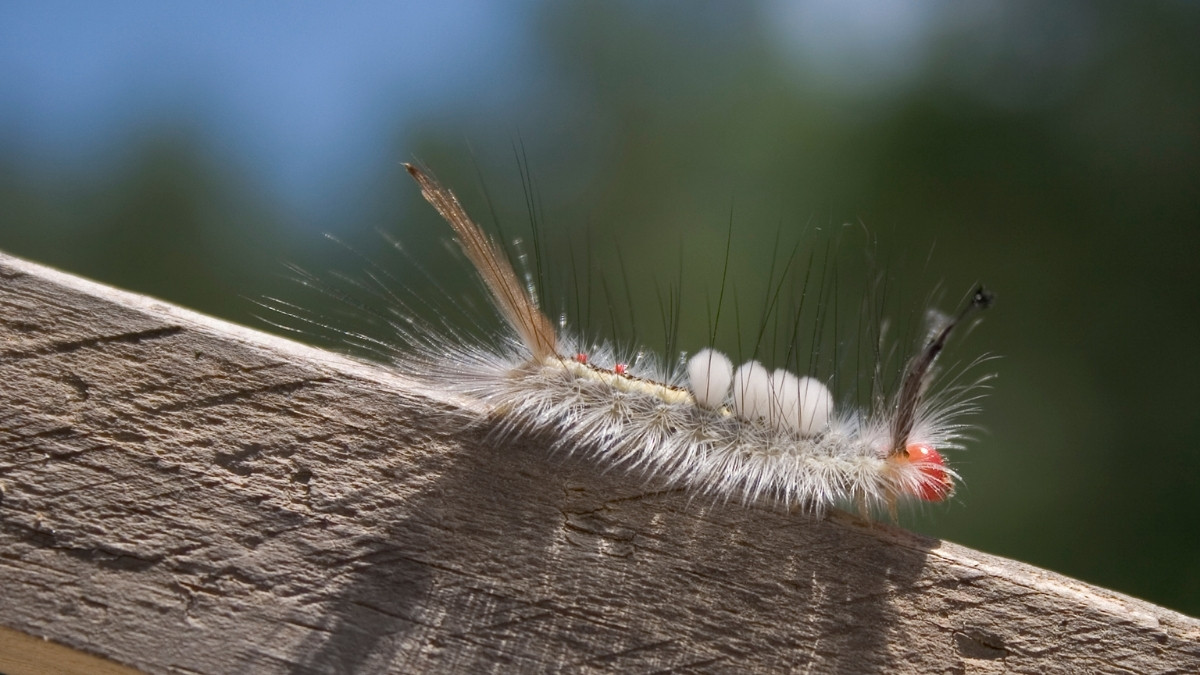
Easily recognizable by its prominent tufts of hair—a dark 'toothbrush' tuft at the front, and two other tufts along its back—this caterpillar is found across Eastern North America. While its sting is less severe than the Puss or Saddleback, the barbed, irritating hairs can cause contact dermatitis, characterized by itching, a rash, and sometimes hives. These hairs are called "urticating bristles" and can get stuck in the skin, which makes it hurt all the time. People who live in or near wooded areas often run into it.
Also Read - List of 5 Most Famous Animals that Migrate in Winter: Revealed
List of 5 Most Poisonous Caterpillars in the USA
While the Giant Silkworm Moth takes the top spot globally, the United States is home to its own collection of dangerously stinging caterpillars. These five species are the most commonly reported culprits for painful envenomations, particularly in the Eastern and Southern states, including hotspots like Florida and Texas. Knowing which native species possess venomous spines is vital for hikers, gardeners, and parents to avoid accidental and painful contact.
| Rank | Poisonous Caterpillar (Larval Stage) | Adult Moth | Primary U.S. Range |
| 1 | Puss Caterpillar | Megalopyge opercularis | Southern & Eastern U.S. (FL, TX, NJ to MO) |
| 2 | Saddleback Caterpillar | Acharia stimulea | Eastern U.S. (WI to TX, East Coast) |
| 3 | Buck Moth Caterpillar | Hemileuca maia | Southeastern U.S. (FL, GA, SC) |
| 4 | Io Moth Caterpillar | Automeris io | North America (Southern Canada to TX, FL) |
| 5 | Hag Moth Caterpillar | Phobetron pithecium | Eastern North America |
Also Read - List of 9 Birds with Most Beautiful Crests (or Crowns) on their Heads
The hidden danger of poisonous caterpillars shows how important it is to be more aware, especially for people who spend a lot of time outside. From the dangerous South American Lonomia to the common stinging caterpillars that live in backyards, it's easy to accidentally touch them. The first step in protecting yourself from these small threats is to learn about them. This will turn potential panic into informed caution and make it possible for quick medical help when needed.
Comments
All Comments (0)
Join the conversation